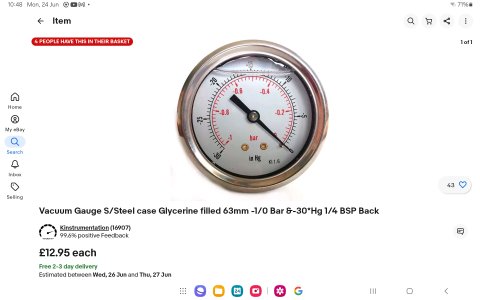Laundryman
Member
I have a Volvo d2-40. My Chinese racor type primary filter is positioned higher than my tank. Between the primary and secondary filters I have a vacuum gauge. Once the engine is running it shows a small vacuum . Question, should the vacuum be retained when the engine stops?
will it reduce over time or disappear immediate? If the vacuum disappears, does this point to a small leak please?
will it reduce over time or disappear immediate? If the vacuum disappears, does this point to a small leak please?

